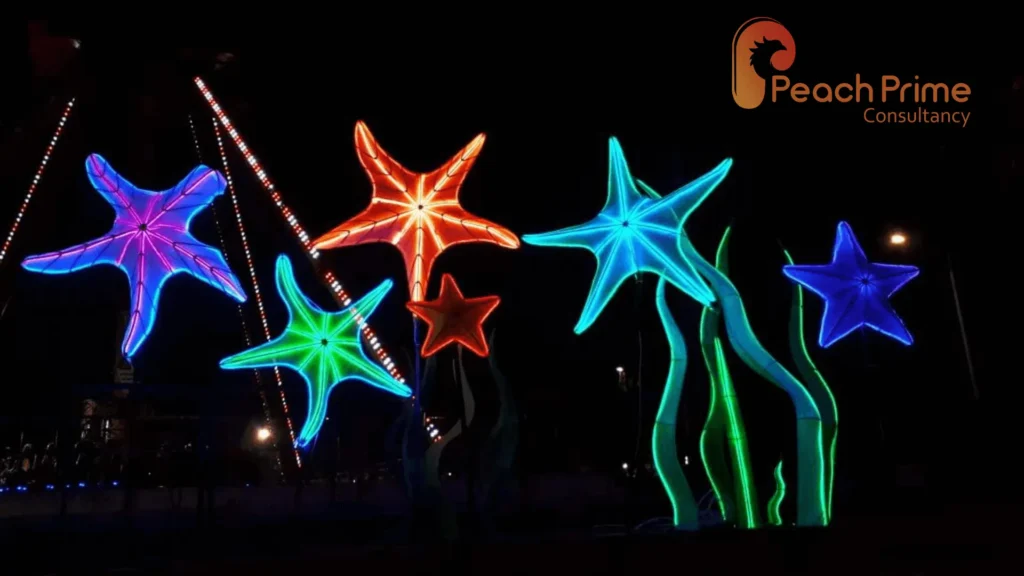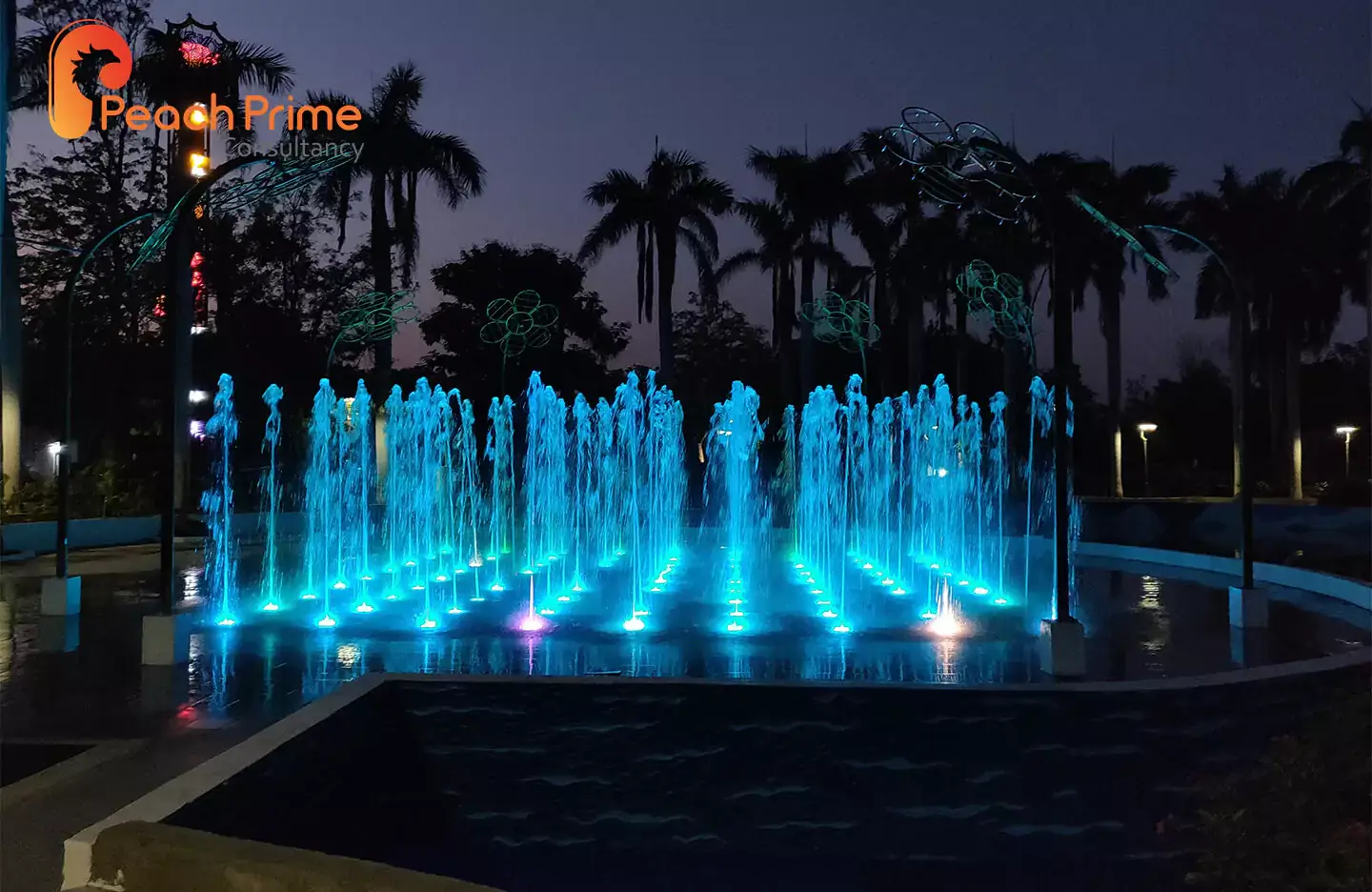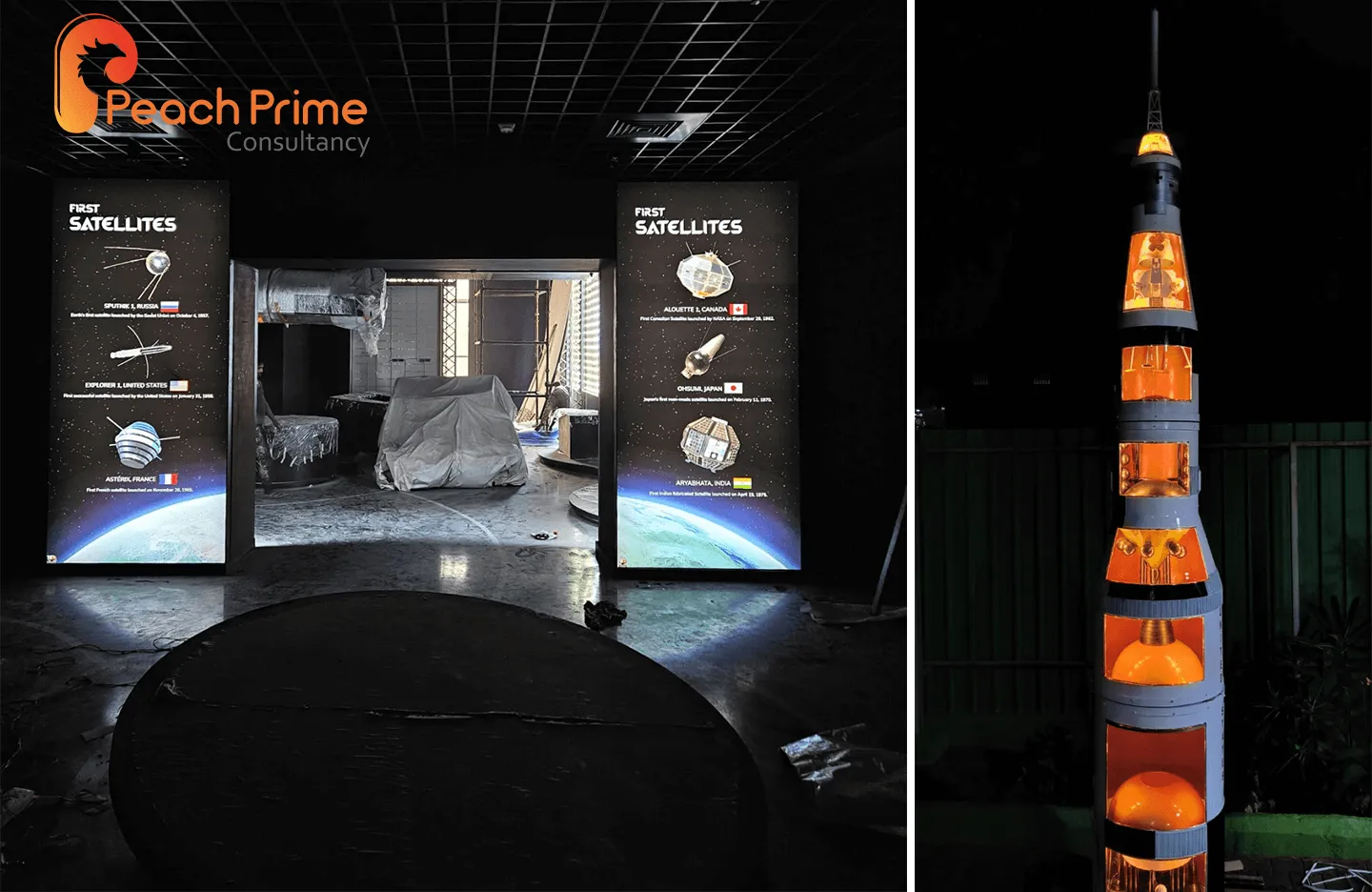Blogs
From Static to Dynamic: How Motion and Light Are Transforming the Future of Museum Design

Museums were once quiet halls filled with static displays and silent observation. Today, they’ve evolved into interactive environments that engage visitors through motion, light, and storytelling. This shift from static to dynamic experiences has transformed how people connect with art, culture, and history — turning passive viewing into active participation.
At Peach Prime, we study how motion, light, and innovative design redefine modern museum experiences, making them more immersive, emotional, and visitor-focused.
The New Era of Interactive Museums
Modern audiences expect more than information — they crave interaction and discovery. Interactive museum design allows visitors to explore exhibits through participation, fostering curiosity and personal connection.
By merging storytelling with responsive environments, museums are becoming living narratives where visitors don’t just observe history — they become part of it.
The Role of Motion in Modern Exhibits
Motion brings energy and rhythm into museum spaces. From kinetic art to motion-activated projections, movement draws attention and creates a sense of flow.
Designers use motion to:
- Direct visitor movement and attention
- Highlight key exhibits dynamically
- Create rhythm and anticipation in storytelling
- Make each display feel alive and responsive
Movement transforms static galleries into dynamic journeys that engage both mind and emotion.
Lighting as the Emotional Core
Lighting shapes emotion and atmosphere. Beyond illumination, it defines tone, focus, and depth within an exhibit.
Lighting design techniques include:
- Soft ambient light for calm reflection
- Dramatic spotlights to emphasize emotion
- Projection mapping for dynamic storytelling
- Adaptive systems that respond to visitor movement
With creative lighting, museums can evoke awe, curiosity, or nostalgia — connecting visitors to exhibits on a deeper emotional level.
The Power of Multisensory Design
Today’s most memorable exhibitions stimulate multiple senses. By combining light, motion, sound, and texture, museums create immersive environments that make learning more tangible.
A multisensory experience helps visitors:
- Retain information longer
- Feel emotionally connected
- Engage naturally with the content
This holistic approach transforms a simple exhibit into a living, memorable experience.
Integrating Technology for Smarter Experiences
Technology plays a key role in creating responsive museum environments. Digital tools such as AR, AI, and projection-based storytelling personalize experiences for every visitor.
Smart technology applications include:
- AR-guided tours revealing hidden layers of stories
- AI personalization to adapt content by visitor interests
- Real-time projections triggered by movement
By integrating intelligent systems, museums make each visit unique and adaptive, ensuring guests return for new discoveries.
Designing for Emotion and Flow
Dynamic exhibits rely on behavioral design — understanding how visitors move, pause, and react. Designers use light, sound, and spatial rhythm to guide exploration naturally.
Design flow strategies:
- Use lighting shifts to signal transitions
- Integrate sound cues to guide curiosity
- Create paths that encourage exploration
When every design element leads to the next, the visitor journey feels seamless and emotionally continuous.
Balancing Technology and Storytelling
While technology drives innovation, storytelling gives museums their soul. The most successful exhibitions balance both — ensuring that digital tools serve the story, not dominate it.
Human-centered museum design focuses on authenticity, emotion, and meaning. Technology becomes a bridge that connects visitors to history, art, and culture in personal and relatable ways.
The Future of Museum Design
The future of museum design lies in hybrid environments where digital and physical elements blend effortlessly. AI-guided tours, responsive lighting, and interactive projections are becoming standard features in next-generation museums.
Emerging trends include:
- Data-responsive exhibits that evolve over time
- Emotion-driven lighting and interactive storytelling
- Hybrid virtual experiences for global audiences
- Sustainable design integrating smart energy systems
While technologies will continue to evolve, the goal remains the same — to connect emotionally with every visitor.
Peach Prime: Designing the Future of Interactive Museums
At Peach Prime Consultancy, we create museum spaces that move, react, and inspire. Our expertise in lighting design, interactive installations, and immersive storytelling transforms traditional exhibitions into engaging, emotional experiences.
From conceptual design and technology integration to visitor flow and experience strategy, we help cultural destinations evolve into living environments that educate, engage, and inspire audiences.
We don’t just design exhibitions — we design experiences that move people.



